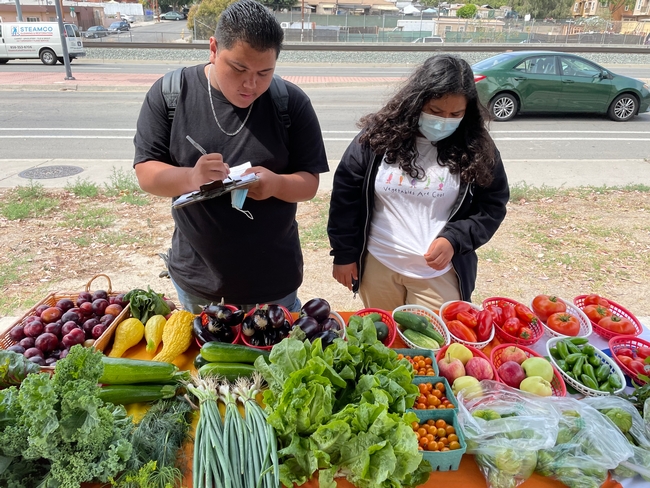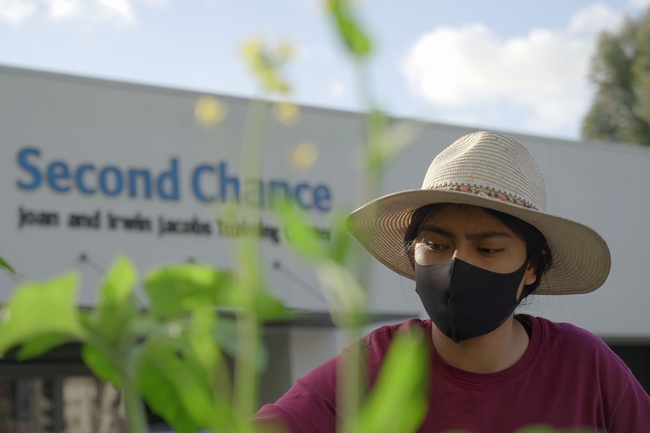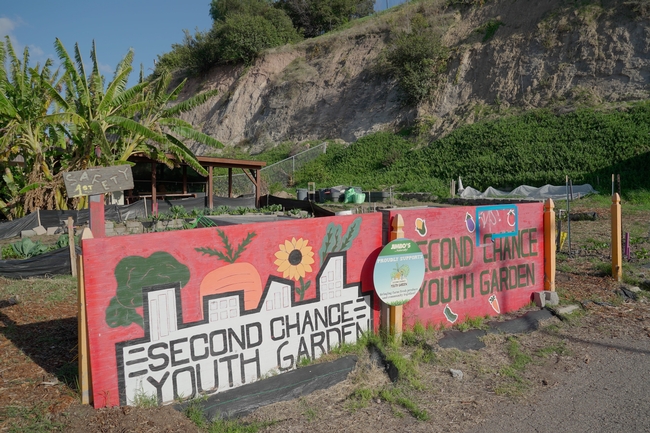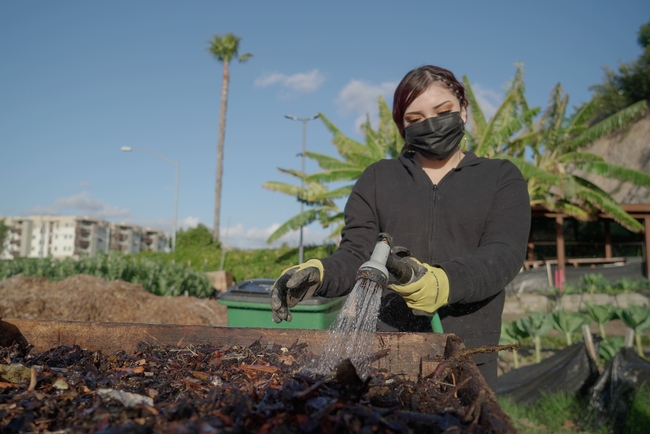UC SAREP's Sustainable Agriculture and Food Systems grant helps support Second Chance garden
Fifteen-year-old Xavier knows the anger within him will never leave. “I can't ever get rid of it,” he said.
“I've always wanted to just fight for no reason; I just had an anger issue, losing my temper quick with people,” added Xavier, a ninth-grader in San Diego County. “I have high expectations of myself.”
Xavier is working to keep his emotions under control, and he has found a sense of calm through his volunteer work. He was an intern – and then a peer supervisor – in the youth-run garden of Second Chance, a San Diego-based organization that works to break the cycles of poverty and incarceration by providing housing and job training to adults and young people.
Operating their garden as a small farm business, youth in the program, ages 14 to 21, offer produce to the community through their farm stand and a CSA (Community Supported Agriculture) model.
“The project incorporates a ‘farm to fork' approach in which youth not only experience how to grow food, but how to cook and eat healthfully,” said Gail Feenstra, director of the University of California Sustainable Agriculture Research and Education Program, which has a grant program that funds research and education projects – such as the youth garden – supporting sustainable food systems.
“Second Chance works primarily with youth in communities of color, providing them with training and also helping them develop confidence in themselves,” Feenstra said.
Filling a critical need for fresh produce
Caelli Wright, program manager of the Second Chance youth garden, said that grant funds from SAREP – a program of UC Agriculture and Natural Resources – have been used to purchase the supplies needed to sustain the program. The garden has filled a critical need for produce during the COVID-19 pandemic.
“After the pandemic hit, we recognized the increased need for fresh food in our neighborhoods,” Wright said. “That need was already there – southeast San Diego is considered a ‘food swamp' or ‘food apartheid', if you will – and with the onset of COVID, that need just escalated with unemployment and complications in our food production systems.”
Through a partnership with UC San Diego Center for Community Health and Encanto Elementary School (located down the block from the garden), donations enabled the program to give its CSA shares to about 25 families at Encanto. Over the course of the pandemic, the youth have grown 10,000 pounds of produce to donate.
At the same time, the program helps the young participants grow. For Xavier, being outdoors with peers empowered him to develop positive relationships. Previously, as a student in a charter school program, he was not accustomed to interacting with people and groups. Volunteering in the youth garden has given him a fresh perspective and understanding of others.
“Learning to be patient with people and [to] accept sometimes that if I don't know something, I need to ask about it, because I used to be so in my ego that I thought I knew everything,” Xavier explained. “But I don't know everything – I just learned to accept some things…that's just being part of life. And that's something that the garden has helped me with, personally.”
Opportunities for personal, social growth
Developing – and redeveloping – social skills are especially important for students, as they return from the disconnections associated with remote learning.
“Right now, with a lot of students facing the aftermath of COVID and being restricted to learning at home and not getting as much social interaction in their daily lives, it's led to a lot of challenges, mental health-wise, and social and emotional learning-wise,” Wright said. “The garden program provides that opportunity that some youth have been missing out on.”
In southeast San Diego, such crucial opportunities for personal growth and career exploration are harder to come by, and Second Chance started the garden in 2012 to give youth a unique work experience and valuable skills. About 400 young people have participated in the program.
“The youth that we serve are coming from low-income neighborhoods that are underserved with resources,” Wright said. “They just are not exposed to the same opportunities [as those in higher-income areas] to build skills or be ready for the workforce or to reach higher education – so that's where our program comes in and helps deliver those needed services.”
Xavier, who originally came to the garden because he heard that landscaping could be a lucrative career, recently finished his second stint as a peer supervisor in the youth garden. With his new skills, he and his cousin are looking to start a business of their own, cutting grass and doing yardwork in their community.
And, late last month, Xavier transferred to a more traditional high school environment.
“Being in a charter school after two, three years,” he said, “I've realized I miss being around more people.”



